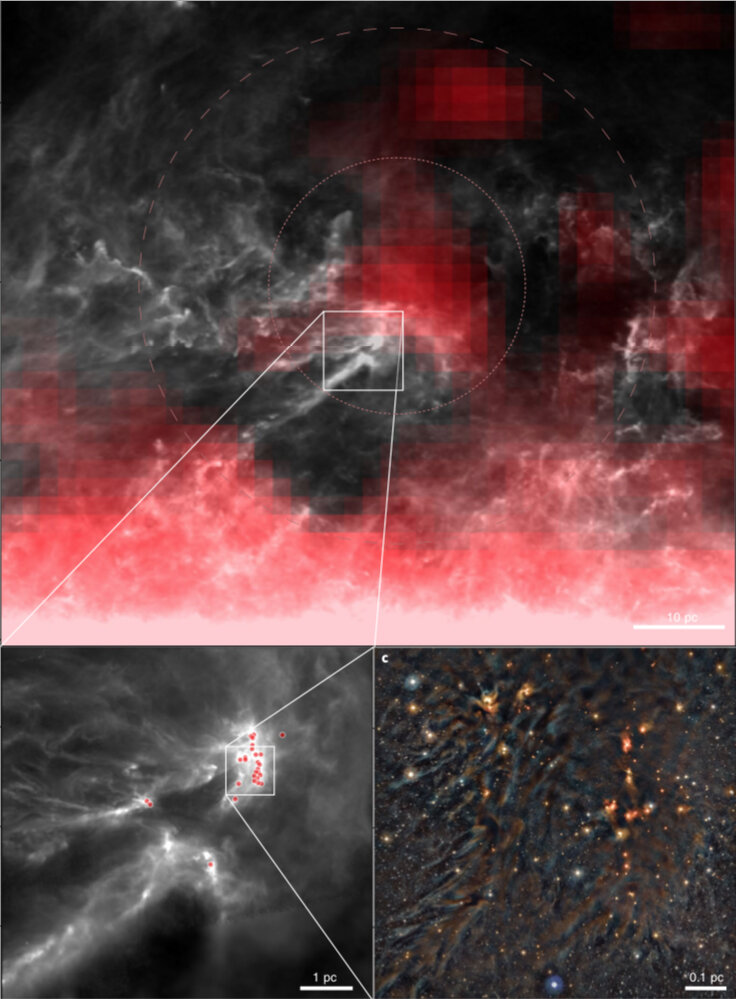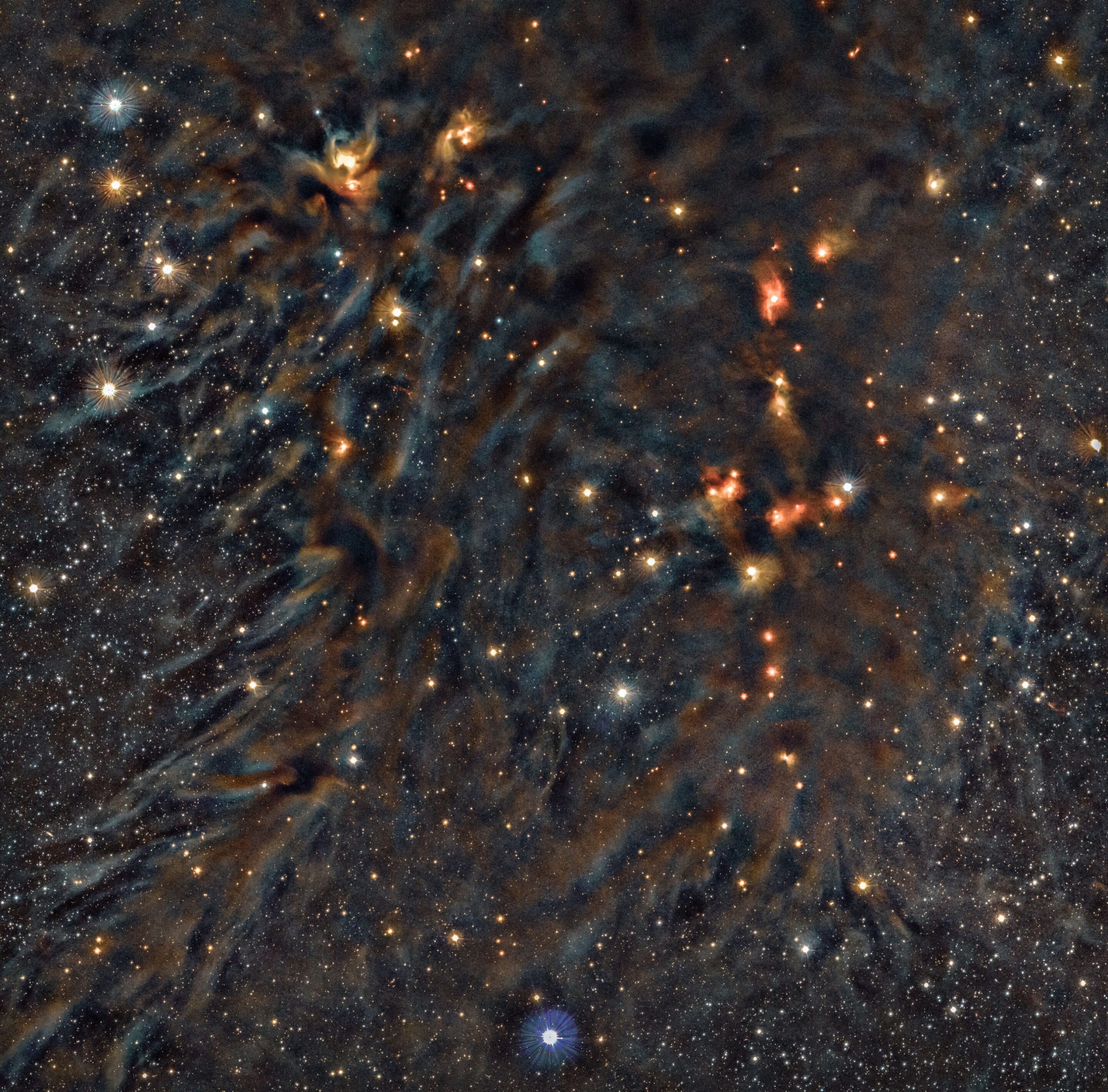Astronomers have found an area of active star formation in the constellation Ophiuchus that is similar to the conditions
Their results indicate that supernovae in a star cluster are the most likely source of short-lived radionuclides in star-forming clouds.
Astronomers on the example of a complex of regionsstar formation in the constellation Ophiuchus traced the paths of transport of the isotope aluminum-26 from the interstellar medium to protoplanetary disks. It turned out that most often it is born during supernova explosions and is able to spread widely across the protoplanetary disk, leading to its global heating.

Our solar system is likelyformed in a giant molecular cloud along with a young star cluster, and one or more supernovae polluted the gas that would later become the sun and its planetary system.
Douglas N.K. Lin, professor of astronomy and astrophysics at the University of California, Santa Cruz
In the clouds of Ophiuchus there are many denseprotostellar nuclei at various stages of star formation and development of the protoplanetary disk. The authors combined images in the wavelength range from millimeters to gamma rays and showed what a stream of aluminum-26 looks like from a nearby star cluster towards the star-forming region of Ophiuchus.
This enrichment process is similar to the one that took place during the formation of the solar system 5 billion years ago.
The authors developed a model that takes into accountevery massive star likely to have existed in the region, including its mass, age, and likelihood of exploding. It also takes into account the potential pathways of aluminum-26 from stellar winds and supernovae. The model made it possible to determine the probabilities of various aluminum-26 production scenarios that we see today.

Read more:
Giant iceberg A74 collides with the coast of Antarctica
Fish with human teeth found in the United States
Wild ticks will be specially released in Russia for pest control